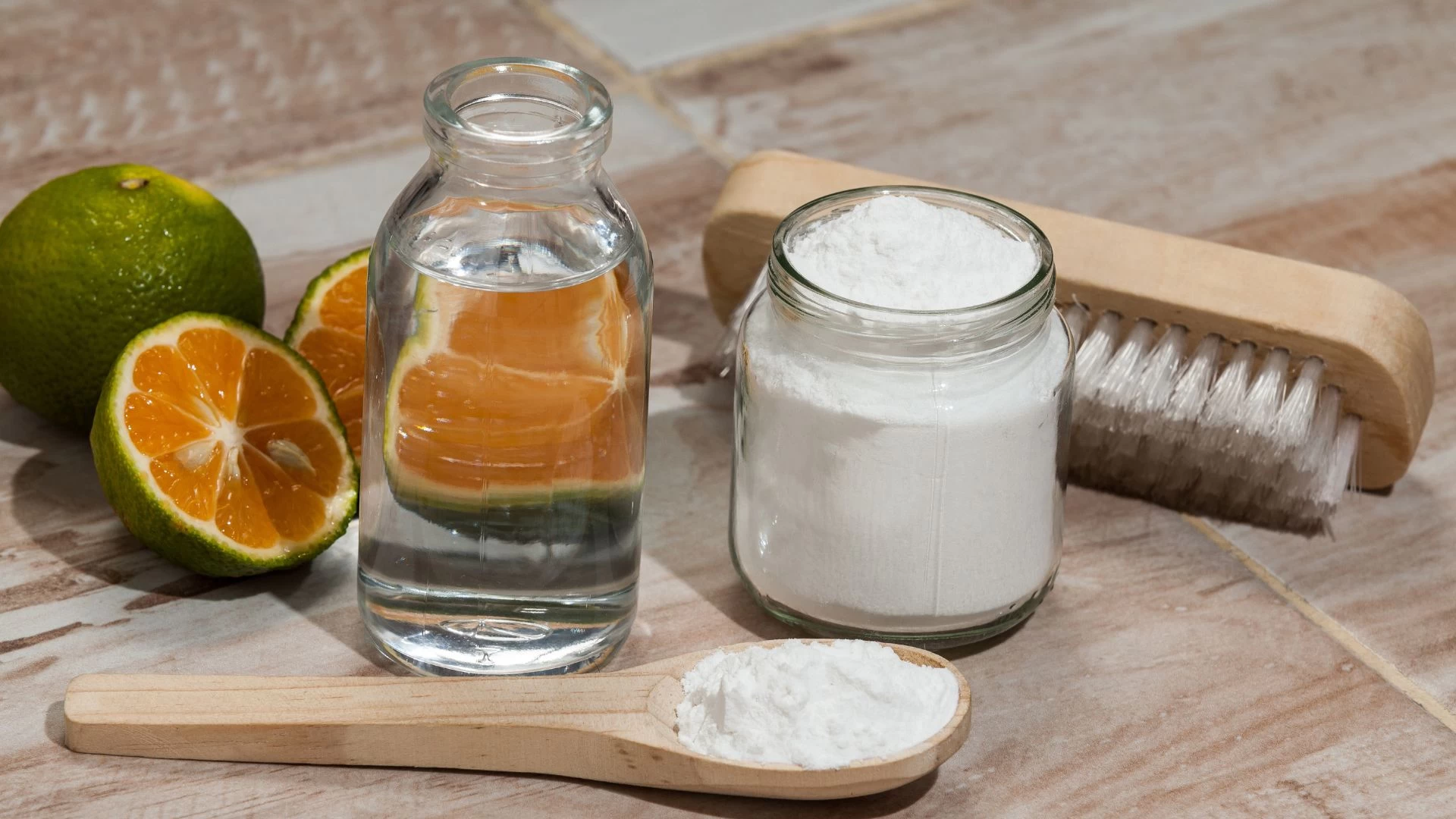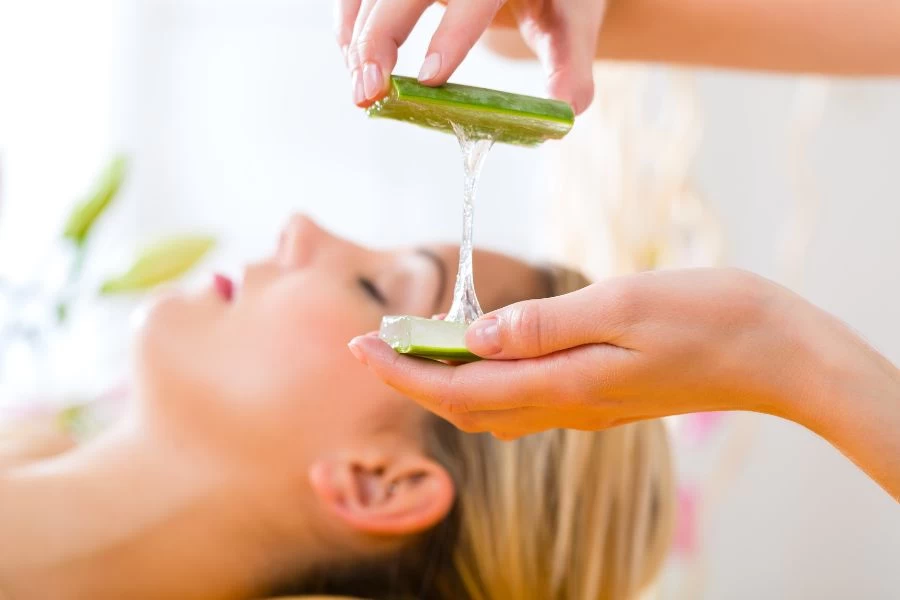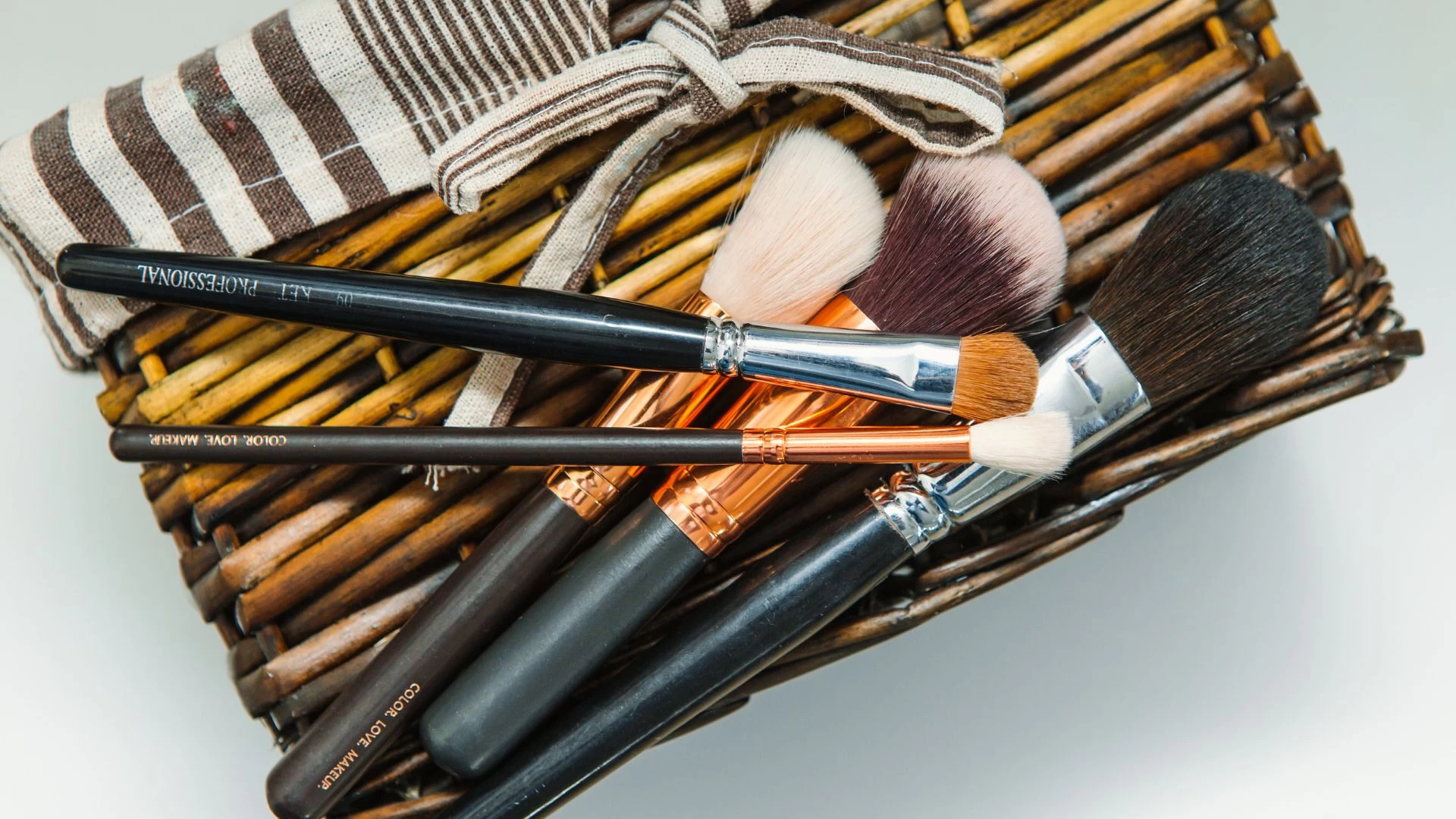Baking Soda Uses for Your Skin
October 03, 2024
Baking Soda Uses for Your Skin
We use baking soda mostly in our kitchen arrangements as it’s an affordable and easily accessible ingredient found in most of our kitchens. But did you know it can be a powerful tool in your skincare routine? From gentle exfoliation to acne treatment, baking soda offers a wide range of skin benefits.
In this blog, we’ll explore how to safely combine baking soda into our beauty routine while learning about the side effects and the best practices.
Whether you're looking to brighten your complexion, treat skin irritations, or reduce acne, baking soda could be your new go-to solution.
Read on to discover the top benefits and usage tips for baking soda on your skin!
What is Baking Soda and How Does It Work on Skin?
Baking soda, or sodium bicarbonate, is a mild alkali that can neutralise acids and gently exfoliate dead skin cells. It is often used in skincare because of its ability to balance the skin's pH levels, specially for oily skin. While beneficial, it’s essential to use baking soda correctly to avoid over-exfoliation and irritation.
10 Benefits of Baking Soda for Skin
Gentle Exfoliation:
Baking soda acts as a mild exfoliant, which helps remove dead skin cells which damages the surface of your skin, causing dullness and uneven texture. The fine grains of baking soda easily remove these dead cells without being too harsh, making your skin feel smoother and look more radiant. However, over-exfoliation can lead to irritation, so it’s important to use baking soda less and follow up with a hydrating moisturiser to restore moisture to your skin.
Acne Treatment:
Baking soda’s anti-inflammatory properties make it a popular choice for treating acne. It can help reduce redness and swelling caused by pimples and other skin breakouts. Additionally, its mild antiseptic properties can help neutralise bacteria that contribute to acne. To use it as a spot treatment, mix a small amount of baking soda with water to create a paste and apply it to individual blemishes for a short period (no more than 5-10 minutes) before rinsing off. However, because baking soda can be drying, it’s best suited for occasional use on acne-prone areas rather than as a regular treatment.
Skin Brightening:
Regular exfoliation with baking soda helps remove dead skin cells and impurities that can dull your complexion, resulting in a brighter, more even skin tone. By gently removing the outermost layer of dead skin, you reveal the fresh, new skin underneath. Over time, this can contribute to a more radiant and youthful appearance. Be mindful, however, as overuse can strip the skin of essential oils and disrupt its natural glow.
Odour Neutralisation:
Baking soda’s natural ability to neutralise odours makes it an effective ingredient in DIY deodorants and treatments for body odour. Its alkaline nature helps balance the pH of the skin, countering the acidic environment where odour-causing bacteria thrive. This is why it’s a common ingredient in homemade underarm deodorants. To use, you can mix a pinch of baking soda with water or coconut oil and apply it directly to your underarms or feet.
Sunburn Relief:
Baking soda can soothe and calm the skin after a sunburn, helping to reduce redness and discomfort. When added to a lukewarm bath, it can provide relief by balancing the skin’s pH and helping to draw out heat from the sunburn. Simply dissolve ½ cup of baking soda into your bathwater and soak for 15-20 minutes to calm inflammation. This can also help alleviate itching and irritation, leaving your skin feeling more comfortable.
Helps with Oily Skin:
Baking soda is excellent for absorbing excess oil from the skin, which can help control shine and reduce the likelihood of clogged pores. Its absorbent properties make it an ideal treatment for individuals with oily or combination skin. For best results, use it as an occasional face mask or cleanser to target oily areas like the T-zone. Be very careful not to overuse, as baking soda can be drying and may lead to the overproduction of oil if your skin wants to produce more for the lost moisture. How to Take Care of Oily Skin: Effective Tips and Skincare Routine
Treats Minor Irritations:
Baking soda’s soothing properties make it a good remedy for minor skin irritations such as insect bites, mild rashes, and allergic reactions. Its ability to neutralise acidic substances helps calm the skin and reduce itching and inflammation. To use it on irritated skin, create a paste with baking soda and water, then apply it to the affected area for a few minutes before rinsing off. You can also mix baking soda into a bath for widespread relief of itching or irritation.
May Help Blackheads:
Blackheads are caused by the buildup of oil and dead skin cells in your pores, which oxidise and turn dark. Baking soda’s exfoliating properties can help remove the surface layer of dead skin that traps oil in the pores, potentially reducing the appearance of blackheads. By gently scrubbing your skin with a baking soda paste (mix 1 teaspoon of baking soda with water), you can clear out pores and prevent the formation of blackheads. However, it’s not a full cure for blackheads, and repeated use should be done cautiously to avoid over-drying the skin.
Removes Dead Skin Cells:
Similar to its exfoliating benefits, baking soda helps shed dead skin cells, which improves the skin’s texture and appearance. Dead skin cells can lead to clogged pores, rough patches, and a dull complexion, so removing them regularly can enhance your skin’s health. A simple DIY scrub using baking soda and water can be applied once a week to keep your skin smooth and soft. For a more luxurious experience, mix baking soda with a bit of honey or olive oil for added hydration during exfoliation.
Smooth Skin Mask:
A baking soda mask can help smooth rough patches and improve overall skin texture. By combining baking soda with a hydrating agent like honey or yoghurt, you can create a soothing mask that exfoliates while moisturising your skin. To make a baking soda face mask, mix two teaspoons of baking soda with one teaspoon of water or aloe vera. Apply to clean, damp skin, and let it sit for 10 minutes before rinsing off with lukewarm water. This helps soften rough areas and leaves your skin feeling refreshed.
To learn more about benefits of honey, read, Benefits of Honey for Skin.
How to Use Baking Soda for Your Skin
Baking Soda Scrub:
Ingredients: 1 tablespoon of baking soda, water
Instructions: Mix baking soda with just enough water to form a paste. Gently massage the paste onto your skin in circular motions for about 1 minute, paying extra attention to rough areas or clogged pores. Rinse thoroughly with warm water and pat dry. Use this scrub once a week for smooth, refreshed skin.
Baking Soda Mask:
Ingredients: 2 teaspoons of baking soda, 1 teaspoon of water
Instructions: Mix baking soda with water to create a thick, spreadable paste. Apply the mask evenly across your face, avoiding the delicate eye area. Leave the mask on for 5-10 minutes, then rinse off with lukewarm water. This mask can be used once a week for a gentle skin renewal treatment.
Baking Soda Bath:
Ingredients: ½ cup of baking soda, warm water
Instructions: Dissolve ½ cup of baking soda in a warm bath and soak for 15-20 minutes. This can help soothe irritated skin, reduce body acne, and calm sunburned or itchy skin. After bathing, pat your skin dry and apply a moisturiser to lock in hydration.
If you want take care of your dry skin in a better way check out - How to Treat Dehydrated Skin
How Long Can Baking Soda Stay on Your Skin?
Baking Soda can be a powerful skin care tool. But you must be careful to avoid any kind of irritation on your skin. Let’s learn, how long it’s safe to leave baking soda on your skin based on different types of treatments:
For Scrubes
Baking soda is a mild exfoliant, so when you are using it as a scrub, it should only stay on the skin for a maximum of 2 minutes. If you scrub longer than it could definitely lead to over-exfoliation, which will cause irritation, redness and dryness. Our skin, particularly the facial part is very delicate, so make sure you keep the pressure gentle and make the scrubbing time short.
For masks
When you are using baking soda as a mask, never leave it on your skin for more than 10 minutes. Otherwise, it will also disrupt the pH balance and will cause dryness. If you use the mask quite often these alkaline products can also lead to irritation. Always use a baking soda mask only once a week and never more than that to keep the moisture of your skin.
Post-Treatment Care
After any treatment using baking soda it is absolutely necessary to moisturise your skin thoroughly. Baking soda can be quite drying, applying a hydrating and soothing moisturiser can help you with your skin barrier, lock in moisturiser and prevent any type of dryness and irritation.
Baking Soda for Specific Skin Conditions
Let’s look at a few specific skin conditions where baking soda can help:
Acne
Baking soda’s anti-inflammatory and mild antiseptic properties can help reduce the redness and swelling caused by acne. The exfoliation also helps to unclog pores and prevent new breakouts. However if you overuse baking soda, it will definitely make it worse. It is actually best to use baking soda as a spot treatment on individual pimples rather than using it on the whole face.
Eczema
Baking soda baths might also relieve itchiness and irritation caused by eczema. It can easily soothe the inflammation and soften the skin. But, because eczema-prone skin is already damaged in its own way, using baking soda frequently can definitely cause it to destroy the skin’s natural protective oils, potentially leading it to more irritation. It is highly recommended to consult with a dermatologist to use baking soda for eczema.
Fix your damage skin barrier - How to Repair a Damaged Skin Barrier
Psoriasis
Baking soda can help relieve the itchiness and discomfort caused by psoriasis by softening the scales and soothing inflamed skin. People who have psoriasis should be very cautious and test in a very small area of their skin.
Wrinkles
A very common question about wrinkles and baking soda is - can baking soda actually help with wrinkles. Some may believe that as baking soda is quite the exfoliant it can help with wrinkles as it clears out dead skin cells and generates new cells. However, there is no strong evidence for that. Overuse might worsen the appearance by drying out the skin, which can cause fine lines.
Potential Disadvantages and Side Effects
There can be some side-effects that people might ignore or do not know about using baking soda on skin, especially on a sensitive one:
pH Balance
Unlike other ingredients baking soda has a higher pH level than our skin barrier. The skin’s natural pH is around 5.5 which is slightly acidic. It helps to protect us from bacteria and environmental damage. Baking soda has a pH of around 9 which is highly alkaline. This can easily lead to dryness, irritation and even skin infections if used frequently.
Dryness and Redness
Baking soda has a drying effect, so overuse can strip the natural oil from the skin. If you ever notice any kind of burning, tingling or even tightness after using baking soda it is absolutely recommended to discontinue it and consult with a specialist.
Contact Dermatitis
In some rare cases people might develop dermatitis from baking soda which can cause an allergic reaction. That’s why it is absolutely important to do a patch test before applying to large areas of your body.
Over-exfoliant
Baking soda is a great exfoliant but if you use it too often then it will lead to micro-tears on your skin. So your skin will be more vulnerable to environmental damage and ageing.
Are you Ready to Learn more about Perfecting Your skin?
Look no further. We are here to provide you with all the guidance. Makeup School Sydney can help you turn your passion into a profession.
You can enrol in SHB50121-Diploma of Beauty Therapy at Makeup School Sydney. Whether you're a beauty enthusiast or an aspiring professional, these courses will teach you everything you need to know about skincare and more.
So start your skincare journey with Makeup School Sydney.
FAQ
Can I use baking soda to clean my private parts?
Answer: Yes! To ease burning and itching in your private part, add 4-5 tablespoons of baking soda to a bath and soak for 10 minutes.
What happens when you rub baking soda on your face?
Answer: baking soda can help with acne, breakouts, reducing inflammation and removing dead skin cells. It works like an exfoliator
Is it okay to use baking soda to whiten skin?
Answer: Since baking soda is an exfoliant so it can be used to remove dark spots. This can help to brighten skin to some extent.
Can baking soda erase black spots?
Answer: Baking soda can remove dead skin cells which might be the reason why you have dark spots in the first place. So any type of patches and black stains can be removed from your skin by baking soda.
Does baking soda make your skin glow?
Answer: Baking soda as an exfoliant can easily remove blemishes, sunburn, pimples and dark spots. Removing all these will surely give you a smoother and a brighter-glowing complexion.
Can baking soda whiten the armpits?
Answer: Absolutely! As baking soda is an excellent exfoliator, mixing it with rose water will make it an excellent solution for whitening your armpits.









